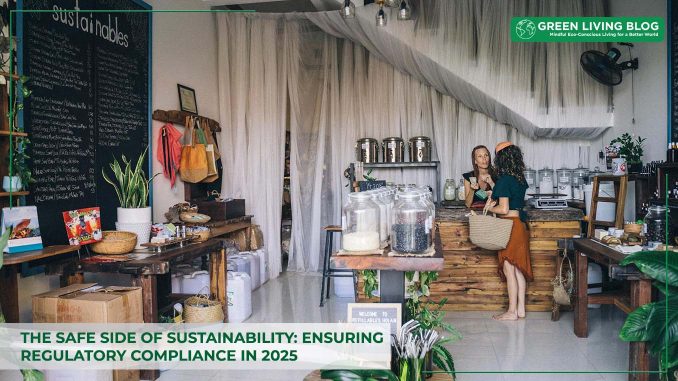
Businesses that place a focus on eco-friendly, sustainable practices have historically suffered from a very specific kind of public perception.
Slightly dirty, politically radical, and not always exactly safe, this is an image that no longer fits but can still lead to poor business practices.
Eco-friendly businesses need to focus on safety and hygiene just as much as any other kind of enterprise, but where do you start with that process?
With a focus on regulatory compliance, this article explores how you should go about ensuring safety in your business in 2025.
Identifying areas of risk

With any business, eco-friendly organisations included, you need to know what risks you’re actually facing in order to do something about them. In most cases, this means committing to ongoing risk assessment.
While some of these risk assessments can be carried out in-house by people who work in your organisation, others will need to be conducted by trained professionals with access to specialist testing equipment.
Either way, risk assessments will need to be regularly updated, to ensure that the risk profile your practical approaches are designed to deal with remains reflective of reality.
Overarching safety frameworks
Based on the risks that you identify as being present in your workplace, you can then choose overarching safety frameworks to document and deal with those areas. These frameworks aren’t only necessary to identify and tackle risks that emerge – they’re also crucial when it comes to proving regulatory compliance during any checks or legal challenges.
For example, with water related hazards, you’ll need to adopt a water safety plan. This will essentially represent an overview of the approaches you’re taking to keep your business free from water-related hazards, whether that’s leaky pipes or dangerous concentrations of bacteria.
Employee training

A big part of safety in all organisations lies in safety training. It doesn’t matter how many fancy gadgets and testing tools you have in your buildings – if people don’t know how to use them and keep other risks to a minimum, you’re still going to be at risk of an unnecessarily large number of safety incidents.
What this training looks like will depend to a certain extent on the business in question. For example, if you’re installing solar panels on the roofs of commercial buildings, your safety training will be quite different to a business that produces eco-friendly cleaning products.
Ongoing diligence
It should go without saying that safety isn’t an issue that you’ll ever fix and then just be able to forget about. You’ll need to keep on coming back to the subject, month in and month out, constantly tweaking your strategy to ensure that it’s still effective based on the new (and old) risks that you’re exposed to.
Keeping your eco-focused business safe in 2025 shouldn’t be too difficult at all. We now have access to many more safety-oriented technologies and frameworks than ever before, and by making the most of the ones that are relevant to your business, you can keep it safe over the years to come.
![]()
Author Profile

- Eco Warrior by day, Eco Blogger by night trying to get the eco balance right.
Latest entries
 Green Home GuidesApril 17, 2025How Heat Pumps Help Cut Household Carbon Emissions
Green Home GuidesApril 17, 2025How Heat Pumps Help Cut Household Carbon Emissions EnvironmentApril 17, 20256 Benefits of Wall Cladding for Eco-Friendly Renovations
EnvironmentApril 17, 20256 Benefits of Wall Cladding for Eco-Friendly Renovations EnvironmentMarch 31, 20255 Sustainable Materials for Building Your Dream Eco-Friendly Pergola
EnvironmentMarch 31, 20255 Sustainable Materials for Building Your Dream Eco-Friendly Pergola Best practicesMarch 25, 202510 Green Tips to Live a More Sustainable Lifestyle
Best practicesMarch 25, 202510 Green Tips to Live a More Sustainable Lifestyle





Leave a Reply
You must be logged in to post a comment.